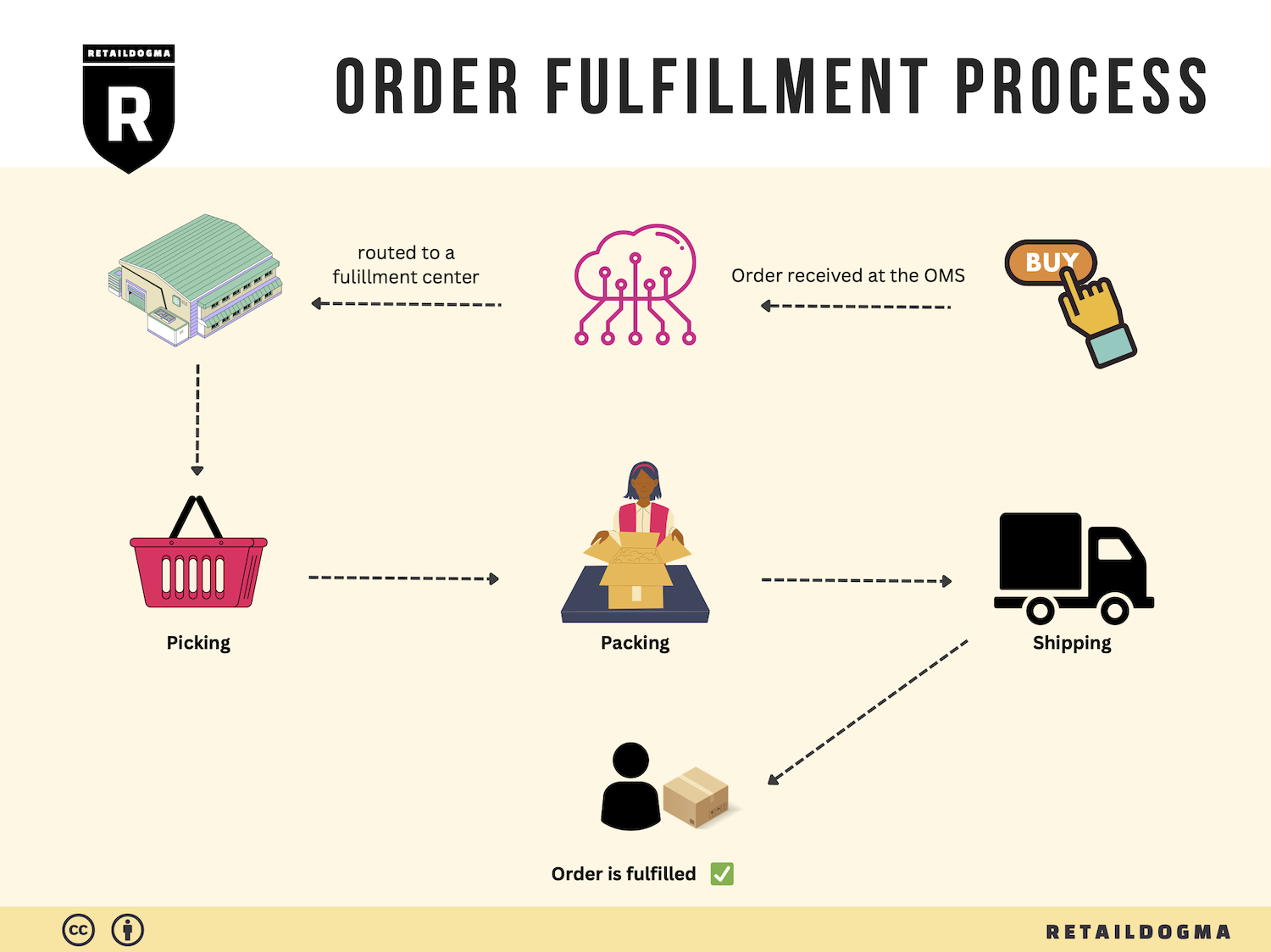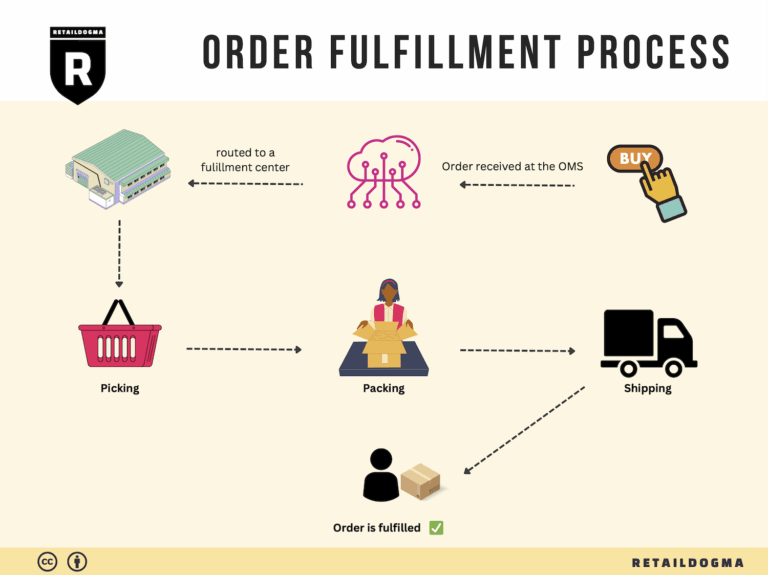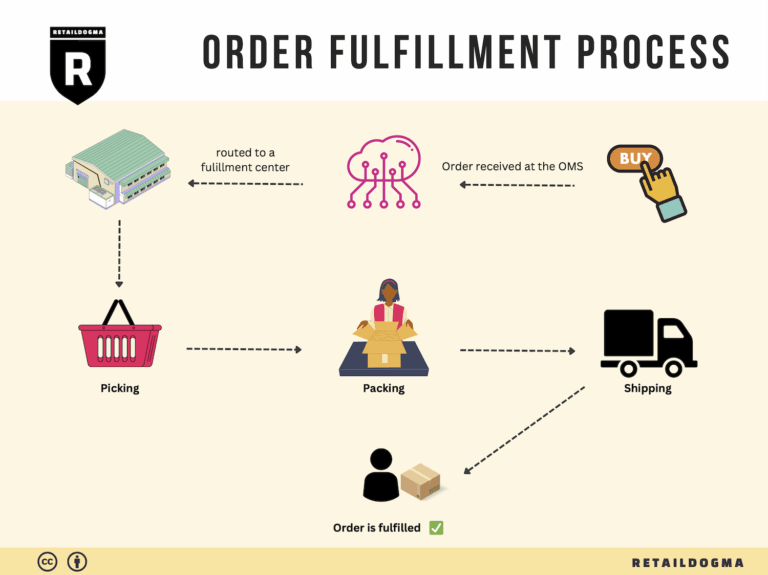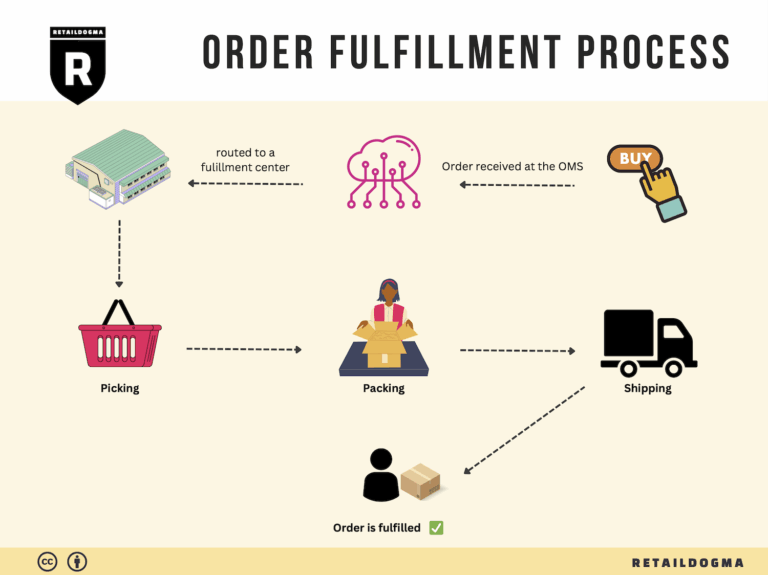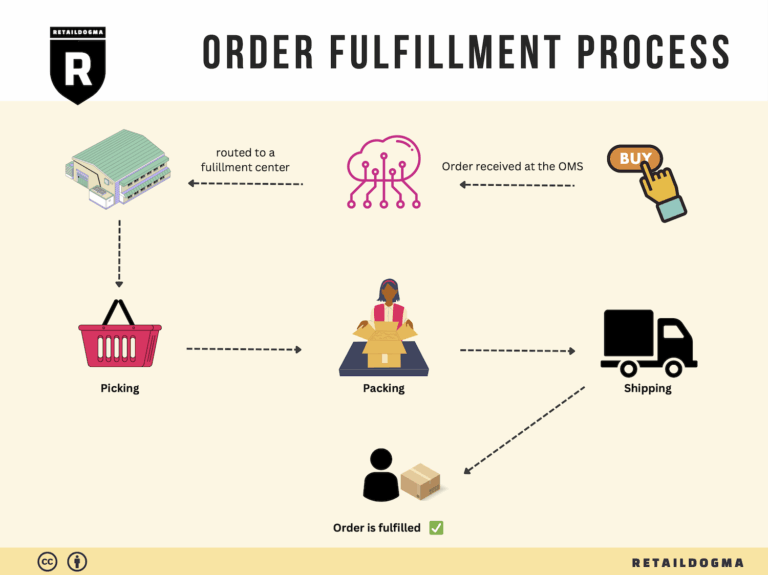Ecommerce Fulfillment Services: The Ultimate Guide (2025)
What is E-commerce Fulfillment? An Introduction for Growing Businesses
Understanding the Challenges of E-commerce Fulfillment
For many growing online businesses, the journey to success often becomes tangled in the complexities of order fulfillment. As sales increase, the process of packing and shipping orders can quickly become overwhelming. Business owners find themselves juggling inventory management, shipping logistics, and customer service, all while trying to maintain their core operations. This is a common pain point that can stifle growth and lead to customer dissatisfaction.
At its essence, e-commerce fulfillment is the process of getting a product from your warehouse to the customer’s doorstep. This includes everything from receiving inventory to picking, packing, and shipping orders. As e-commerce continues to evolve, so too do the expectations of consumers who demand fast, reliable, and affordable delivery options. For businesses aiming to scale, understanding the intricacies of fulfillment is crucial.
What This Guide Will Cover
This comprehensive guide will delve into various models of e-commerce fulfillment, including Third-Party Logistics (3PL) and Fulfilled by Amazon (FBA). We’ll explore the core services that these models offer, such as inventory storage, order processing, and shipping solutions. Each model has its strengths and weaknesses, and understanding these can help you choose the right fit for your business.
Moreover, we will provide practical insights on how to select a fulfillment partner that aligns with your business needs. Factors such as technology integration, customer service, and cost structures will be examined to ensure you make an informed choice. Pricing models will also be discussed, helping you to understand the financial implications of each fulfillment strategy and how to optimize your logistics costs.
Empowering Smart Logistics Decisions
Ultimately, this guide aims to empower e-commerce business owners, operations managers, and entrepreneurs to make smart decisions about their logistics. By breaking down the complexities of e-commerce fulfillment and providing actionable insights, we hope to equip you with the knowledge needed to streamline your operations, enhance customer satisfaction, and drive sustainable growth. Whether you are just starting or looking to scale, understanding fulfillment can be a game-changer in your e-commerce journey.
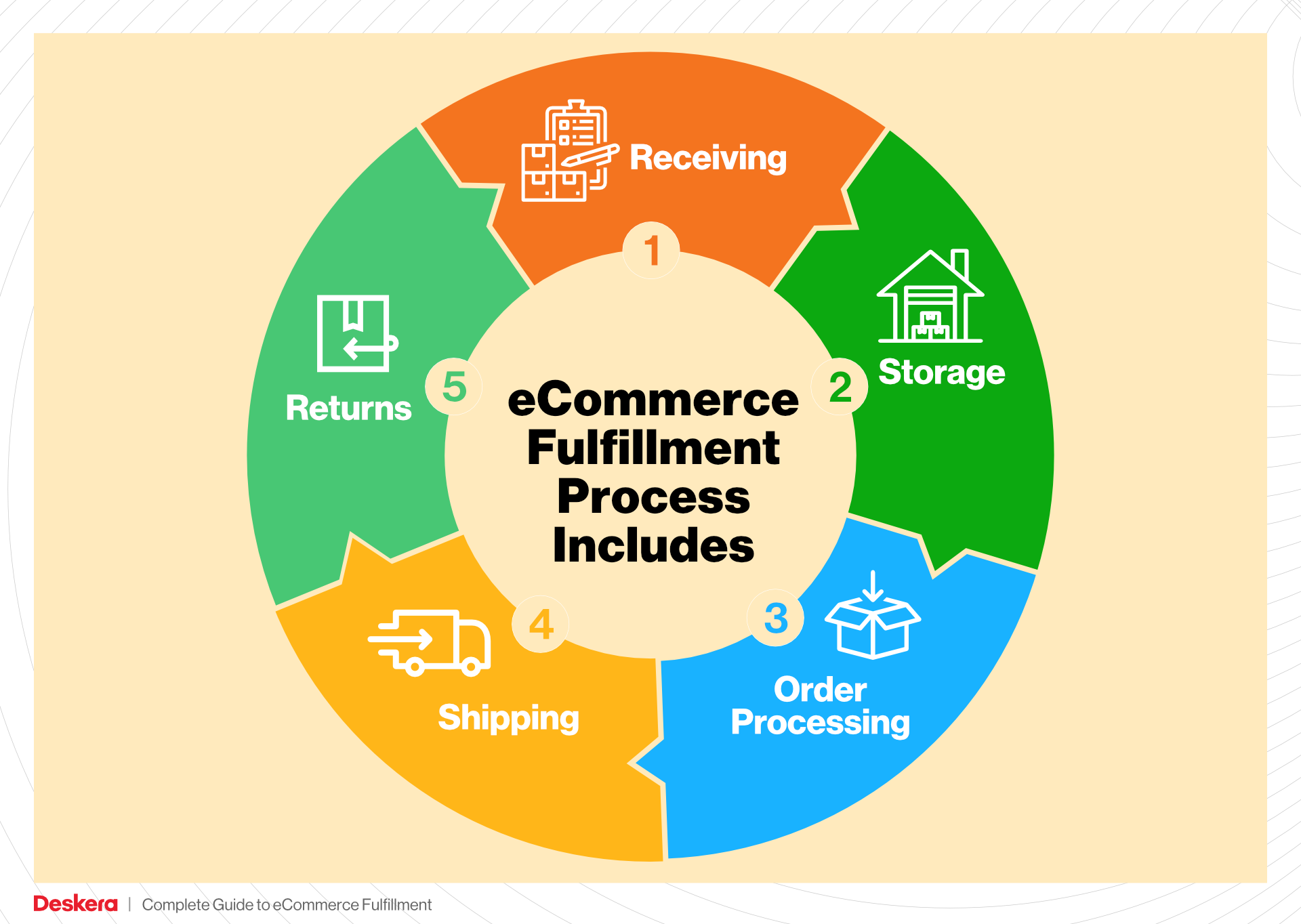
What You’ll Learn In This Guide
- What is E-commerce Fulfillment? An Introduction for Growing Businesses
- The Order Fulfillment Process: From ‘Buy’ Button to Customer’s Door
- Comparing Fulfillment Models: In-House vs. 3PL vs. Dropshipping
- A Deep Dive into Amazon FBA: Pros, Cons, and Who It’s For
- Core Services Offered by Fulfillment Centers
- How to Choose a Fulfillment Partner: A 6-Point Checklist
- Understanding Fulfillment Pricing: A Breakdown of Common Fees
- Frequently Asked Questions (FAQs) about Fulfillment
- Conclusion: Is Outsourcing Fulfillment the Right Move for Your Business?
- Important Disclaimer
The Order Fulfillment Process: From ‘Buy’ Button to Customer’s Door
1. Receiving Inventory
The order fulfillment process begins with receiving inventory from manufacturers or suppliers. This step is crucial as it sets the foundation for efficient inventory management. Upon arrival at the fulfillment center or distribution center, products are unloaded and checked against purchase orders to ensure accuracy. This process typically involves the use of Stock Keeping Units (SKUs), which are unique identifiers assigned to each product.
Why is this step important? Accurate receiving minimizes discrepancies and prevents stockouts or overstock situations, both of which can lead to lost sales or increased holding costs. Implementing a robust receiving process ensures that inventory is accounted for and ready to be stored or picked for orders, enhancing overall operational efficiency.
2. Warehouse Storage
After inventory is received and verified, the next step is warehouse storage. This involves organizing the products in a manner that facilitates easy access and quick order fulfillment. Various storage methods may be employed, such as pallet racking, shelving, or bin systems, depending on the type and size of the products.
The importance of this step cannot be overstated. Efficient warehouse storage optimizes space utilization and allows for faster retrieval of products when orders are placed. Employing a Warehouse Management System (WMS) can greatly enhance this process by providing real-time inventory tracking and data analytics, which help businesses understand stock levels and turnover rates. A well-organized warehouse leads to reduced picking times and improved order accuracy.
3. Order Picking
Once a customer places an order, the fulfillment process shifts to order picking. This step involves retrieving the correct items from their storage locations to fulfill the order. Order pickers typically use pick lists—documents that detail the items and quantities needed for each order.

This stage is critical as it directly impacts customer satisfaction. Fast and accurate picking ensures that orders are filled correctly and shipped promptly. Businesses can adopt various picking methods, such as single order picking, batch picking, or zone picking, depending on their volume and operational scale. The choice of method can significantly affect efficiency and labor costs, so selecting the right approach is essential for scaling operations.
4. Order Packing
Once the items are picked, they move to the order packing stage. During this phase, products are carefully packaged for shipment. This includes selecting appropriate packing materials to protect the items during transit and ensuring that the packaging is compliant with shipping regulations.
Packing is crucial for preventing damage and ensuring that customers receive their orders in excellent condition. Additionally, well-packed orders enhance the unboxing experience, which can positively influence customer perception and future purchasing decisions. Utilizing packing slips and labeling systems can streamline this process, ensuring that each package is correctly identified and documented for tracking purposes.
5. Shipping & Delivery
The final step in the order fulfillment process is shipping and delivery. Once orders are packed, they are handed over to carriers for transportation to the customer’s doorstep. This stage involves selecting the most efficient shipping methods and routes, taking into account factors like delivery speed, cost, and package dimensions.
The significance of this step lies in its direct impact on customer satisfaction and retention. In today’s e-commerce environment, consumers expect timely and reliable delivery, often influenced by competitors’ offerings. Implementing a robust logistics strategy, including partnerships with multiple carriers, can improve delivery options and enhance service levels. Tracking capabilities should also be integrated, allowing customers to monitor their orders in real time, which helps build trust and transparency.
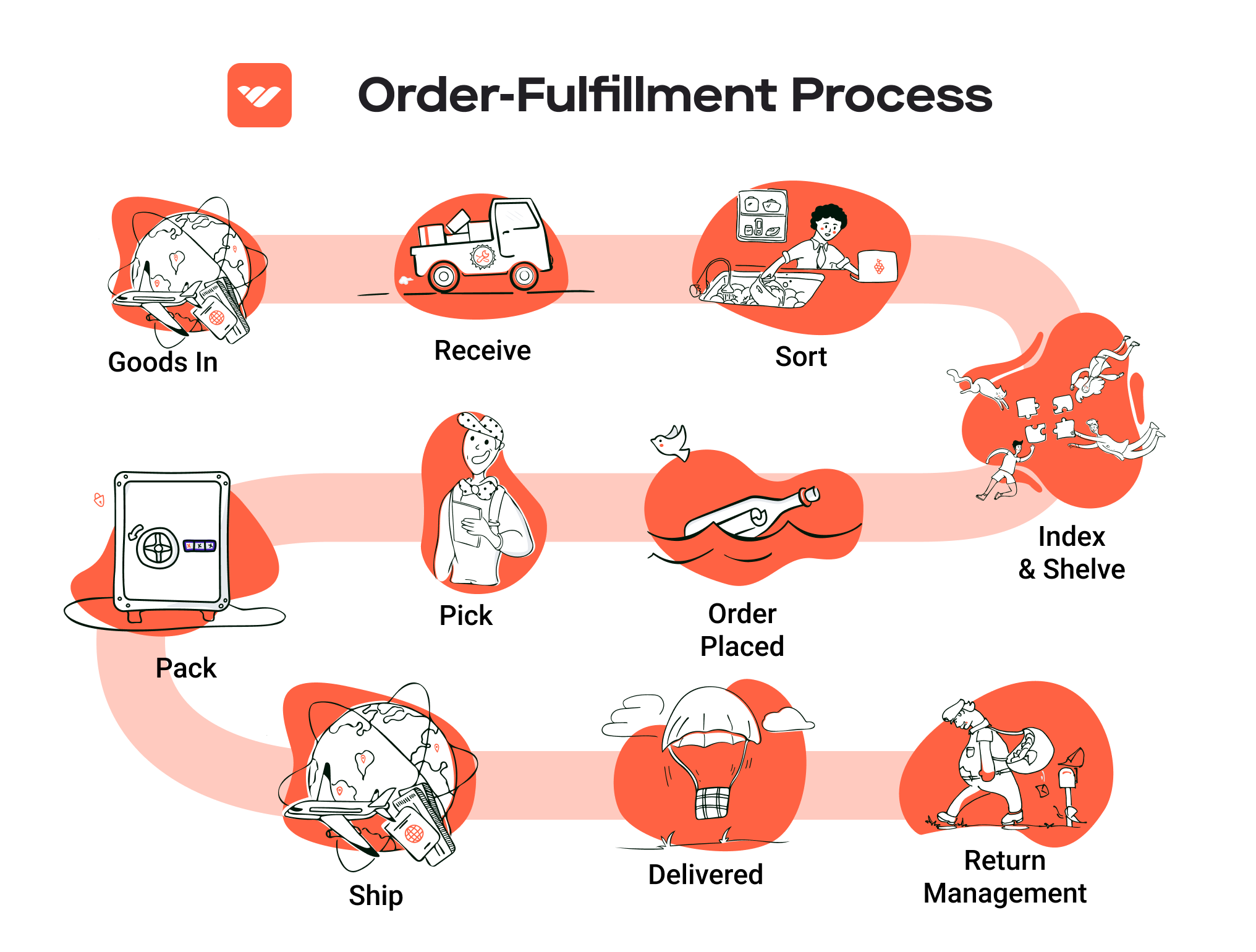
In conclusion, the order fulfillment process is a multi-faceted operation that requires careful attention to detail at each step—from receiving inventory to delivering products to customers’ doors. By optimizing each stage, e-commerce businesses can improve efficiency, reduce costs, and enhance customer satisfaction, ultimately supporting their growth and scalability in a competitive market.
Comparing Fulfillment Models: In-House vs. 3PL vs. Dropshipping
Fulfillment Model Comparison
| Model | Who Handles Inventory | Best For (Business Stage) | Key Advantage | Key Disadvantage |
|---|---|---|---|---|
| In-House Fulfillment | Business itself | Established businesses with steady sales | Complete control over inventory and operations | High upfront costs and resource commitment |
| Third-Party Logistics (3PL) | Outsourced logistics provider | Growing businesses looking to scale | Reduced operational complexity and costs | Less control over inventory management |
| Dropshipping | Supplier or manufacturer | Startups and small businesses | Low upfront investment and minimal risk | Lower profit margins and limited control over fulfillment |
In-House Fulfillment
In-house fulfillment involves managing all aspects of the supply chain, from inventory management to shipping, within the business itself. This model is best suited for established businesses with consistent sales volumes, as it requires a significant investment in warehousing, staffing, and technology. The primary advantage of in-house fulfillment is the level of control it affords over inventory management and the entire fulfillment process. Businesses can tailor their operations to meet specific needs, ensuring quality control and faster response times to customer inquiries and order changes. However, this model comes with notable disadvantages, including high upfront costs for facilities and equipment, ongoing operational expenses, and the requirement for skilled staff to manage the logistics efficiently. As a result, while in-house fulfillment can lead to enhanced customer satisfaction, it also demands a substantial commitment of resources, which may not be feasible for all businesses.
Third-Party Logistics (3PL)
Third-party logistics (3PL) is a model where businesses outsource their fulfillment operations to specialized logistics providers. This model is ideal for growing businesses looking to scale their operations without the burdens of managing logistics themselves. By partnering with a 3PL provider, businesses can take advantage of their expertise, technology, and established networks to streamline fulfillment processes. Key advantages of 3PL include reduced operational complexity, lower shipping costs due to economies of scale, and the ability to focus on core business activities such as marketing and product development. Additionally, 3PL providers often have advanced warehousing and inventory management systems that enhance order accuracy and speed. However, the trade-off is a loss of direct control over inventory management and fulfillment processes, which can lead to potential issues such as miscommunication, slower response times, or inconsistencies in service quality. Businesses must carefully select a reliable 3PL partner to mitigate these risks and ensure alignment with their operational goals.
Dropshipping
Dropshipping is a fulfillment model where the retailer does not hold inventory but instead partners with suppliers or manufacturers who ship products directly to customers on behalf of the retailer. This model is particularly attractive to startups and small businesses, as it requires minimal upfront investment and significantly reduces the risk associated with holding inventory. Since retailers do not need to invest in warehousing or logistics, they can focus on marketing and customer acquisition. The primary advantage of dropshipping is the low financial barrier to entry and the ability to offer a wide range of products without the need for large investments in inventory. However, dropshipping also comes with its challenges. Retailers often face lower profit margins since they must rely on suppliers for pricing and shipping. Additionally, the lack of control over inventory and fulfillment can lead to issues such as stockouts, shipping delays, and quality inconsistencies, which can negatively impact customer satisfaction. For businesses looking to scale, dropshipping can be a useful entry point, but it may not provide the level of reliability and control needed as they grow.
Conclusion
Choosing the right fulfillment model is crucial for e-commerce businesses aiming to scale effectively. Each model presents unique advantages and challenges that must align with the business’s operational capabilities, growth stage, and customer expectations. In-house fulfillment offers control but demands significant resources, while 3PL provides scalability with reduced complexity. Dropshipping is an accessible option for newcomers but may compromise profit margins and quality control. By carefully evaluating these options, business owners can make informed decisions that best support their growth objectives.
A Deep Dive into Amazon FBA: Pros, Cons, and Who It’s For
Understanding Fulfillment by Amazon (FBA)
Fulfillment by Amazon (FBA) is a service offered by Amazon that allows e-commerce sellers to store their products in Amazon’s fulfillment centers. Amazon then takes care of storage, packaging, shipping, and customer service on behalf of the sellers. This service has become a popular choice for businesses looking to scale their operations efficiently while leveraging Amazon’s vast logistics network.
How FBA Works
-
Inventory Storage: Sellers send their products to Amazon’s warehouses, where they are stored until sold. Amazon offers a network of fulfillment centers across various locations, allowing sellers to store their inventory closer to potential customers.
-
Order Processing: When a customer places an order for a product listed under FBA, Amazon handles the entire fulfillment process. This includes picking the product from storage, packaging it, and shipping it directly to the customer.
-
Customer Service and Returns: Amazon also manages customer service inquiries related to FBA orders and handles returns. This reduces the operational burden on sellers and allows them to focus on other aspects of their business.
-
Multi-channel Fulfillment: FBA is not limited to Amazon sales. Sellers can use FBA to fulfill orders from other sales channels, such as their own e-commerce websites or other marketplaces, further enhancing their operational efficiency.
Pros of FBA
-
Prime Eligibility: Products fulfilled through FBA are eligible for Amazon Prime, which can significantly increase visibility and sales. Prime members often prefer products that qualify for free two-day shipping, giving FBA sellers a competitive edge.
-
Customer Trust: Leveraging Amazon’s brand reputation, products fulfilled by FBA often enjoy higher levels of trust among consumers. The reliability of Amazon’s logistics and customer service can lead to increased customer satisfaction and loyalty.
-
Multi-channel Fulfillment: FBA allows sellers to fulfill orders from multiple sales channels, not just Amazon. This flexibility enables businesses to streamline their operations and manage inventory more effectively.
-
Time Savings: By outsourcing logistics and customer service to Amazon, sellers can free up valuable time and resources. This allows them to focus on product development, marketing strategies, and scaling their business.
-
Advanced Logistics: Amazon’s sophisticated logistics infrastructure ensures that products are stored and shipped efficiently. This capability helps sellers meet customer expectations for fast delivery, which is increasingly important in today’s e-commerce landscape.
-
Easy Returns Management: Amazon handles returns for FBA orders, making it easier for sellers to manage customer returns and maintain a positive buying experience. This can lead to better ratings and reviews.
Cons of FBA
-
High Fees: One of the most significant drawbacks of FBA is the cost. Sellers are subject to various fees, including storage fees for holding inventory and fulfillment fees based on the size and weight of the products. These costs can add up quickly and eat into profit margins.
-
Strict Inventory Rules: Amazon has stringent inventory management policies. Sellers must adhere to specific guidelines regarding inventory levels, packaging, and labeling. Non-compliance can result in additional fees or penalties, which can be detrimental to business operations.
-
Commingling Risks: FBA operates on a commingling model, meaning that products from different sellers may be stored together in the same fulfillment center. This can lead to concerns over brand integrity and counterfeit risks, as sellers may receive returns or shipments of products that are not theirs.
-
Limited Control Over Shipping: While Amazon handles shipping, sellers have limited control over the process. This can be problematic if a seller wants to provide a unique unboxing experience or has specific shipping preferences.
-
Inventory Limits: Amazon imposes limits on how much inventory sellers can store in its fulfillment centers, especially for new accounts. This restriction can hinder growth for sellers looking to scale quickly.
-
Potential for Stockouts: Due to the logistics involved, there is always a risk of stockouts, especially if a product experiences a surge in demand. If inventory runs low, sellers may face delays in restocking, leading to lost sales.
Who is FBA Best For?
Fulfillment by Amazon is particularly well-suited for:
-
Small to Medium-sized Businesses: Companies that lack the resources to manage their logistics and customer service can benefit greatly from FBA’s outsourcing capabilities.
-
Brands Looking to Scale: Businesses aiming to grow quickly and reach a wider audience can leverage Amazon’s infrastructure to streamline operations and enhance customer experience.
-
Sellers with High Sales Volume: Those who anticipate consistent sales can offset FBA fees with increased sales velocity, making the service more cost-effective.
-
E-commerce Entrepreneurs: New sellers looking for a straightforward way to enter the e-commerce space can use FBA to simplify logistics and focus on building their brand.
-
Multi-channel Retailers: Businesses selling on multiple platforms can use FBA for efficient order fulfillment, enabling them to provide fast shipping across various sales channels.
In conclusion, while FBA offers numerous advantages for e-commerce sellers, it is essential to weigh the associated costs and risks. By understanding both the pros and cons, businesses can make informed decisions about whether FBA aligns with their operational goals and growth strategies.
Core Services Offered by Fulfillment Centers
Inventory Management & Warehousing
Inventory management and warehousing are foundational services provided by fulfillment centers, critical for e-commerce businesses aiming to streamline their operations. This service encompasses the systematic handling of inventory, including receiving, storing, and tracking products until they are ready for shipment.
Benefits:
-
Optimized Stock Levels: Fulfillment centers utilize advanced Warehouse Management Systems (WMS) that integrate with e-commerce platforms to provide real-time inventory tracking. This ensures that businesses maintain optimal stock levels, reducing the risk of stockouts and excess inventory. Efficient inventory management leads to better cash flow, as capital is not unnecessarily tied up in unsold goods.
-
Cost-Effective Storage Solutions: Fulfillment centers offer scalable warehousing options that cater to the varying needs of e-commerce businesses. Whether you need short-term storage for seasonal items or long-term warehousing for slow-moving products, fulfillment centers provide flexible solutions that can adapt to changing demand, ultimately reducing storage costs.
-
Enhanced Accuracy and Efficiency: By centralizing inventory in a fulfillment center, businesses can achieve greater accuracy in order fulfillment. Advanced tracking systems minimize human error and allow for precise inventory counts, which translates into improved customer satisfaction through timely and accurate deliveries.
Pick and Pack Services
Pick and pack services are another essential offering of fulfillment centers, where products are selected from inventory and packed for shipment according to customer orders. This process is crucial for ensuring that orders are fulfilled accurately and efficiently.
Benefits:
-
Streamlined Order Fulfillment: Fulfillment centers employ sophisticated picking technologies and methodologies, such as batch picking or wave picking, to streamline the order fulfillment process. This not only speeds up the time it takes to get products out the door but also reduces labor costs associated with order picking.
-
Customization and Quality Control: Many fulfillment centers offer customizable packing options, allowing businesses to tailor packaging to their brand identity or specific customer preferences. Additionally, rigorous quality control measures ensure that each order is packed correctly, reducing the likelihood of returns due to packing errors.
-
Increased Scalability: As e-commerce businesses grow, their order volumes can fluctuate significantly. Fulfillment centers provide the flexibility to scale operations up or down without the need for significant capital investment in staffing or infrastructure. This adaptability is particularly beneficial during peak seasons, such as holidays or sales events.
Kitting and Assembly
Kitting and assembly services involve the grouping of multiple items into a single package or assembling products before they are shipped to customers. This service is particularly useful for businesses that offer bundled products or require complex assembly.
Benefits:
-
Value-Added Services: By outsourcing kitting and assembly to fulfillment centers, businesses can provide unique product offerings, such as gift sets or promotional bundles, without the burden of handling the assembly process in-house. This not only enhances the product’s appeal but also differentiates the brand in a crowded marketplace.
-
Improved Operational Efficiency: Fulfillment centers have the expertise and resources to efficiently handle kitting and assembly, freeing up internal resources for e-commerce businesses. This allows companies to focus on their core competencies, such as marketing and product development, rather than logistics.
-
Cost Savings: Outsourcing kitting and assembly can lead to significant cost savings. Fulfillment centers can leverage their existing processes and economies of scale to minimize labor and material costs associated with these tasks. This efficiency can translate into better pricing for consumers and improved profit margins for businesses.
Returns Management (Reverse Logistics)
Returns management, also known as reverse logistics, is a crucial service offered by fulfillment centers to handle product returns efficiently. This process involves receiving returned items, inspecting them, restocking them if necessary, and managing the overall returns process.
Benefits:
-
Enhanced Customer Experience: Efficient returns management is vital for customer satisfaction. A well-organized returns process allows customers to return products easily, fostering trust and encouraging repeat purchases. Fulfillment centers can streamline this process, ensuring that returns are handled quickly and accurately.
-
Cost Efficiency: Managing returns can be costly and time-consuming for e-commerce businesses. By outsourcing this function to a fulfillment center, companies can reduce overhead costs associated with processing returns, such as labor and warehousing space. Furthermore, fulfillment centers can implement systems to minimize losses from returned goods, such as refurbishing items or reselling them at a discount.
-
Data Insights and Inventory Management: Fulfillment centers often provide valuable data regarding return trends and reasons for returns. This information can help e-commerce businesses identify issues with products or customer satisfaction, allowing them to make informed decisions about inventory management and product development. By addressing the root causes of returns, businesses can improve their overall performance and reduce future return rates.
In conclusion, partnering with a fulfillment center can significantly enhance an e-commerce business’s operational efficiency and customer satisfaction. By leveraging services like inventory management, pick and pack, kitting, and returns management, businesses can focus on growth while ensuring that their logistics are handled professionally and cost-effectively.
How to Choose a Fulfillment Partner: A 6-Point Checklist
Location & Warehouse Network
Importance:
The geographical location of your fulfillment partner’s warehouses is critical for reducing shipping times and costs. A well-positioned network ensures that products can reach customers swiftly, meeting the growing demand for fast delivery.
Questions to Ask:
1. Where are your warehouses located, and how does this align with our target customer demographics?
2. Can you provide details on your shipping zones and transit times to key regions?
3. How do you manage inventory across multiple locations to optimize delivery efficiency?
Technology & Integrations
Importance:
In today’s digital-first environment, the technology that a fulfillment partner employs can significantly impact your operational efficiency. A robust Warehouse Management System (WMS) and the ability to integrate with your e-commerce platform streamline processes and enhance visibility.
Questions to Ask:
1. What technology do you use for inventory management, and how does it integrate with our existing systems?
2. Can you provide real-time tracking and reporting capabilities?
3. Are you able to accommodate future technological upgrades or integrations as our business grows?
Specializations (e.g., Cold Storage, Oversized Items)
Importance:
Different products have unique storage and handling requirements. A fulfillment partner’s specialization can ensure that your specific products are stored and shipped correctly, maintaining quality and compliance.
Questions to Ask:
1. Do you have experience handling our specific product types (e.g., perishable goods, oversized items)?
2. What specialized equipment or facilities do you have to manage these products?
3. Can you provide case studies or references from clients with similar product needs?
Scalability & Capacity
Importance:
As your business grows, your fulfillment needs will likely change. A partner with scalable solutions can accommodate fluctuations in order volume without compromising service quality.
Questions to Ask:
1. How do you manage capacity during peak seasons or unexpected demand surges?
2. What are your policies for scaling operations in response to our business growth?
3. Can you share examples of how you have successfully scaled for other clients?
Pricing and Contracts
Importance:
Understanding the pricing structure and contract terms of a fulfillment partner is essential to ensure that you remain within budget while getting the services you need. Clarity on costs helps avoid unexpected expenses.
Questions to Ask:
1. What pricing models do you offer (e.g., per-unit, storage-based), and how do they align with our business model?
2. Are there any hidden fees or surcharges we should be aware of?
3. What are the contract terms regarding cancellation, service level agreements, and price adjustments?
Customer Support & Reviews
Importance:
Reliable customer support is vital in ensuring smooth operations and addressing any issues promptly. Additionally, researching reviews and testimonials can provide insights into the partner’s reputation and reliability.
Questions to Ask:
1. What customer support services do you offer (e.g., dedicated account manager, 24/7 support)?
2. How do you handle service disruptions or fulfillment errors?
3. Can you provide references or case studies from current clients, particularly those with similar needs to ours?
Conclusion
Choosing the right fulfillment partner is a pivotal decision that can significantly impact your e-commerce business’s success. By using this checklist, you can methodically evaluate potential partners based on critical factors that align with your operational needs and growth goals. Prioritize open communication and thorough due diligence to ensure a partnership that enhances your logistics capabilities and supports your business objectives.
Understanding Fulfillment Pricing: A Breakdown of Common Fees
Initial Setup Fees
When partnering with a fulfillment service, the initial setup fee is often the first cost you’ll encounter. This fee typically covers the onboarding process, which includes integrating your e-commerce platform with the fulfillment center’s systems, establishing inventory management protocols, and configuring shipping options. The cost can vary based on the complexity of your setup and the technology used by the fulfillment center.
For example, some providers may charge a flat fee ranging from $200 to $1,500, depending on the level of service and customization required. It’s essential to clarify what is included in this fee—some providers may bundle additional services, such as training and support, while others may charge separately for those.
Receiving Fees
Receiving fees are charged when your inventory arrives at the fulfillment center. This fee covers the labor and resources needed to unload, inspect, and store your products. The calculation of receiving fees can vary; some centers charge a per-pallet fee, while others may charge based on the number of items received or the total weight of the shipment.
For instance, a common model might charge between $20 to $50 per pallet or $0.25 to $1.00 per item. It’s important to understand the specifics of how receiving is billed, especially if you frequently send bulk shipments. Additionally, consider any potential discounts for larger shipments, as many fulfillment centers offer tiered pricing.
Storage Fees (per pallet/bin)
Storage fees are recurring charges for the space your inventory occupies within the fulfillment center. These fees are often calculated on a per-pallet or per-bin basis and can vary by season, with higher rates during peak shopping periods.
Typically, storage fees range from $15 to $50 per pallet per month. For smaller items, per-bin storage fees might apply, often costing around $2 to $10 per bin monthly. It’s crucial to estimate your inventory turnover rate to minimize storage costs. Excess inventory can lead to increased fees, so maintaining a lean inventory will help control these expenses.
Pick & Pack Fees (per item/order)
Pick and pack fees are charged for the labor involved in retrieving items from storage and preparing them for shipment. This fee can be structured in various ways, including a per-item fee or a flat rate per order.
A common pricing model might charge $0.50 to $2.00 per item for picking and packing, with some fulfillment centers offering reduced rates for bulk orders. Additionally, if your business requires special packaging or kitting services, these may incur additional fees. Understanding the pick and pack process and any related charges is vital, as these costs can accumulate quickly, especially for businesses with high order volumes.
Shipping Fees
Shipping fees are one of the most variable components of fulfillment pricing. These fees depend on factors such as shipping method, package dimensions, weight, and destination. Most fulfillment centers offer a range of shipping options, from standard to expedited services, each with its own pricing structure.
For example, shipping fees can range from $5 for standard shipping to $20 or more for expedited services. Some fulfillment centers may offer discounted shipping rates through partnerships with carriers, which can significantly reduce costs. Be sure to inquire about these arrangements and how they can impact your overall shipping expenses.
Tips for Getting an Accurate Quote
-
Detailed Inventory List: Provide a comprehensive list of your products, including dimensions, weights, and any special handling requirements. This information is crucial for accurate receiving, storage, and shipping quotes.
-
Volume Estimates: Share your expected order volumes and turnover rates. Many fulfillment centers offer discounts for higher volumes, so understanding your business’s scale can lead to better pricing.
-
Clarify Services: Ensure you understand what services are included in each fee. Ask about any additional costs for services like returns management, kitting, or custom packaging.
-
Compare Providers: Don’t settle for the first quote you receive. Compare multiple fulfillment centers to understand the market rates and services offered.
-
Negotiate Terms: Many fulfillment centers are open to negotiation, especially if you’re committing to a long-term partnership. Discuss potential discounts based on your volume and service needs.
By understanding these common fulfillment pricing models and how they are calculated, you can make informed decisions that align with your business goals while optimizing your logistics strategy for growth.
Frequently Asked Questions (FAQs) about Fulfillment
1. What is an Amazon fulfillment facility?
An Amazon fulfillment facility is a specialized warehouse where Amazon stores products from sellers. It handles the entire process of storing, picking, packing, and shipping products directly to customers. This facility is designed to optimize efficiency and speed, allowing Amazon to meet its customer delivery promises, such as same-day or two-day shipping.
2. What’s the difference between a warehouse and a fulfillment center?
While both warehouses and fulfillment centers store products, their purposes differ significantly. A warehouse is primarily focused on long-term storage of goods, often for manufacturers or suppliers. In contrast, a fulfillment center is optimized for order processing and shipping, handling tasks like picking, packing, and shipping products directly to customers, often with a focus on speed and efficiency.
3. How do Amazon fulfillment centers support e-commerce businesses?
Amazon fulfillment centers provide a range of services that support e-commerce businesses, including inventory storage, order processing, shipping, and returns management. By utilizing Amazon’s extensive logistics network, sellers can offer faster delivery times and potentially reduce shipping costs, enhancing customer satisfaction and increasing sales.
4. What is a 3PL (Third-Party Logistics)?
A 3PL is a logistics provider that offers outsourced logistics services to businesses. This includes services such as warehousing, inventory management, order fulfillment, and transportation. Partnering with a 3PL can help e-commerce businesses scale operations, reduce costs, and improve service levels without the need for extensive in-house logistics capabilities.
5. How much do fulfillment services cost?
Fulfillment service costs can vary widely depending on factors such as storage fees, order processing fees, and shipping costs. For Amazon fulfillment services, sellers typically pay based on the volume of inventory stored and the number of orders processed. It’s essential for businesses to analyze their specific needs and compare costs among various fulfillment providers to find the most cost-effective solution.
6. How does Amazon ensure fast delivery from its fulfillment centers?
Amazon achieves fast delivery through a combination of advanced logistics technology, strategic placement of fulfillment centers, and efficient inventory management. By positioning fulfillment centers close to major customer bases and using sophisticated algorithms to predict demand, Amazon can minimize shipping distances and times, ensuring quick order fulfillment.
7. What are the benefits of using Amazon’s fulfillment services?
The benefits of using Amazon’s fulfillment services include access to Amazon’s vast logistics network, faster shipping options, improved customer service, and the ability to scale operations without significant upfront investment. Additionally, sellers can leverage Amazon’s brand reputation, which can enhance trust and credibility with customers.
8. Can I use Amazon fulfillment services for my own website?
Yes, you can use Amazon fulfillment services for orders placed on your own website through a program called Fulfillment by Amazon (FBA). This allows you to store your products in Amazon’s fulfillment centers while still selling through your own e-commerce platform, benefiting from Amazon’s shipping and customer service capabilities.
9. How does inventory management work in an Amazon fulfillment facility?
Inventory management in an Amazon fulfillment facility is streamlined through advanced Warehouse Management Systems (WMS). These systems track inventory levels in real-time, manage reordering, and optimize storage locations. This ensures that products are readily available for order fulfillment and helps prevent stockouts.
10. What is the process for getting my products into an Amazon fulfillment center?
To get your products into an Amazon fulfillment center, you must first create a seller account and set up your products in Amazon’s system. Once your products are listed, you will prepare and ship them to the designated fulfillment center according to Amazon’s guidelines. This includes labeling, packaging, and following specific shipping instructions to ensure your products are received and processed efficiently.
Conclusion: Is Outsourcing Fulfillment the Right Move for Your Business?
Evaluating the Decision to Outsource Fulfillment
Outsourcing your fulfillment operations can be a game-changing move for your e-commerce business. By leveraging a fulfillment service, you gain significant advantages that can accelerate your growth and enhance customer satisfaction. First and foremost, outsourcing saves you valuable time. This allows you to focus on core business activities such as product development, marketing, and building customer relationships, rather than getting bogged down by logistics.
Additionally, a third-party fulfillment partner offers scalability that is essential for growing businesses. Whether you experience seasonal spikes in demand or plan to expand your product range, a reliable fulfillment service can adjust to your needs without the burden of managing additional inventory or warehouse space. This flexibility is crucial in today’s fast-paced e-commerce environment, where consumer expectations for quick delivery are higher than ever.
Moreover, partnering with experts in fulfillment can elevate your operations. These professionals bring advanced technology, industry best practices, and a wealth of experience that can streamline your logistics, reduce overhead costs, and enhance overall efficiency. Their expertise allows you to meet customer expectations consistently, contributing to repeat business and brand loyalty.
However, it’s imperative to choose the right fulfillment partner. A strategic fit with your business model, transparent pricing, and the ability to scale with you are all critical factors to consider. Take the time to evaluate potential partners thoroughly, ensuring they align with your growth objectives.
As a next step, conduct an audit of your current shipping and fulfillment processes. Assess whether they are meeting your business needs and customer expectations. If gaps exist, exploring an outsourcing solution may be the key to unlocking your business’s full potential. Embrace the opportunity to transform your logistics strategy and position your e-commerce brand for sustainable growth.
Important Disclaimer
⚠️ Important Disclaimer
The information in this guide is for educational purposes. Fulfillment services, pricing, and platform features change frequently. Always conduct your own due diligence and consult with providers directly before making business decisions.
